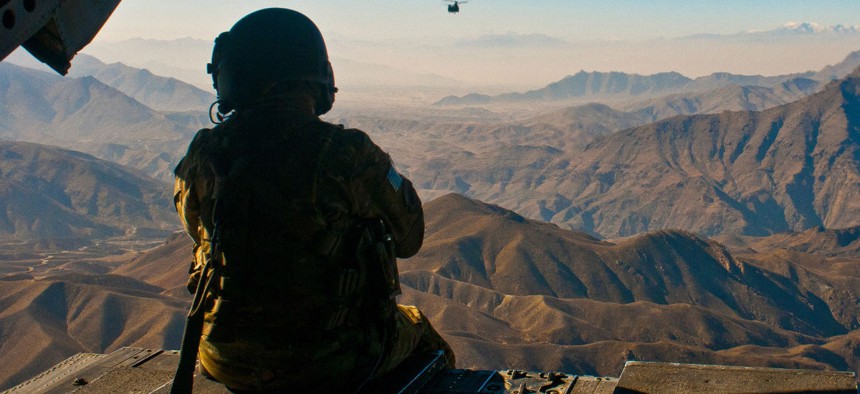Special IG Calls for Trump-Era Recalibration in Afghanistan
With rising casualties and chaos, agencies should re-prioritize programs, says Sopko.
Faced with a deteriorating military and economic situation, U.S. agencies working to rebuild war-torn Afghanistan should use the advent of a new presidential administration to re-rank programs to focus on those that are most effective, a watchdog advised.
In a grim quarterly report to Congress, Special Inspector General for Afghanistan Reconstruction John Sopko said, “One smart first step would be to do what SIGAR recommended years ago, which is for each of the three major agencies in the reconstruction effort—[the State Department, U.S. Agency for International Development and the Defense Department]—to ‘rack and stack’ their top and worst performing projects so they know where to invest further and where to cut their losses.”
Though President Obama during his final months augmented the U.S. military presence in Afghanistan to combat the Taliban, SIGAR’s statistics dramatized the backward motion:
- Conflict-related civilian casualties in Afghanistan rose to 11,418 in 2016 – the highest total civilian casualties recorded since documentation began in 2009, while Afghan army forces suffered 807 deaths in the first six weeks of 2017 alone;
- Security incidents in 2016 and the first quarter of 2017 reached their highest level since United Nations reporting began in 2007;
- 660,639 people in Afghanistan fled their homes due to conflict in 2016, the highest number of displacements on record and a 40 percent increase over the previous year.
Afghanistan has made some progress, SIGAR said. “Afghan military and police forces have grown, taken lead responsibility for the country’s security, and show increased effectiveness,” the report said. “Public health has improved, as reflected in lower infant mortality and increased life spans. School construction and student enrollments have expanded. Women’s status is slowly improving.”
The report added: “President Ashraf Ghani and Chief Executive Abdullah Abdullah both have personal involvement in attacking corruption, and better cooperation with U.S. investigators such as SIGAR in seeking indictments. These are no small achievements.”
But long-term prospects are made bleak by the economy. Domestic revenues are expected to pay for only 38 percent of the Afghan budget this year, with donor assistance covering the rest, SIGAR said. “Of 190 countries, Afghanistan is nearly last in dealing with construction permits (186), getting electricity (159), registering property (186), trading across borders (175) and enforcing contracts (180), according to the World Bank’s Doing Business report. Narcotics traffickers provide weapons, funding and material support to the insurgency in exchange for protection, while insurgent leaders traffic drugs.
Agency-administered programs and contracts continue to be plagued by corruption, poor infrastructure and miscommunication, SIGAR found. For example, “nearly a half-billion dollars’ worth of transport aircraft procured for the Afghans were found unfit for use and were scrapped for pennies a pound,” the report said. “Some buildings were built with concrete that dissolved in rain, or with walls and roofs that could collapse, or with unsafe wiring and inadequate plumbing.”
The IG staff recommended that the U.S. agencies prepare for triage “by indicating what programs could be reduced, postponed, or cancelled if budget constraints required,” and enhance management practices to confirm whether programs have “clearly defined objectives, measurable benchmarks and sustainable end states.” Agencies should also arrive at a long “overdue” strategy for curbing the Afghans’ dependence on the opium trade, SIGAR said.
The key to better program evaluation, SIGAR added—citing practices used by the Government Accountability Office and the Office of Management and Budget—is making disciplined comparisons among similar programs over time to measure costs and outcomes.




